Abandoned Beauties: 19 Castles in Spain
Written by Nadia Podrabinek
Hello, my name is Nadia. I usually write about traveling (there are so many places to fit all the lifestyles), relocation, and living in a foreign country (adapting to a different culture). My travels stretch beyond Spain, with journeys to the US, Italy, Norway, Portugal, and France. Relocating to Spain in 2018, I lived in cities from Barcelona to Madrid, currently calling Valencia home. Follow me on Twitter, Facebook, Instagram, or LinkedIn! ... show more

I have discovered 19 abandoned castles and other mysterious sites in Spain that will definitely captivate you with their look and history. They are scattered throughout the country, including a ghost ship, a castle, a weapons factory, abandoned villages, a dictator’s residence, and an eerie station.
As always, it’s best to see them for yourself. Are you familiar with any of them?
The Hell’s Castle, Barcelona

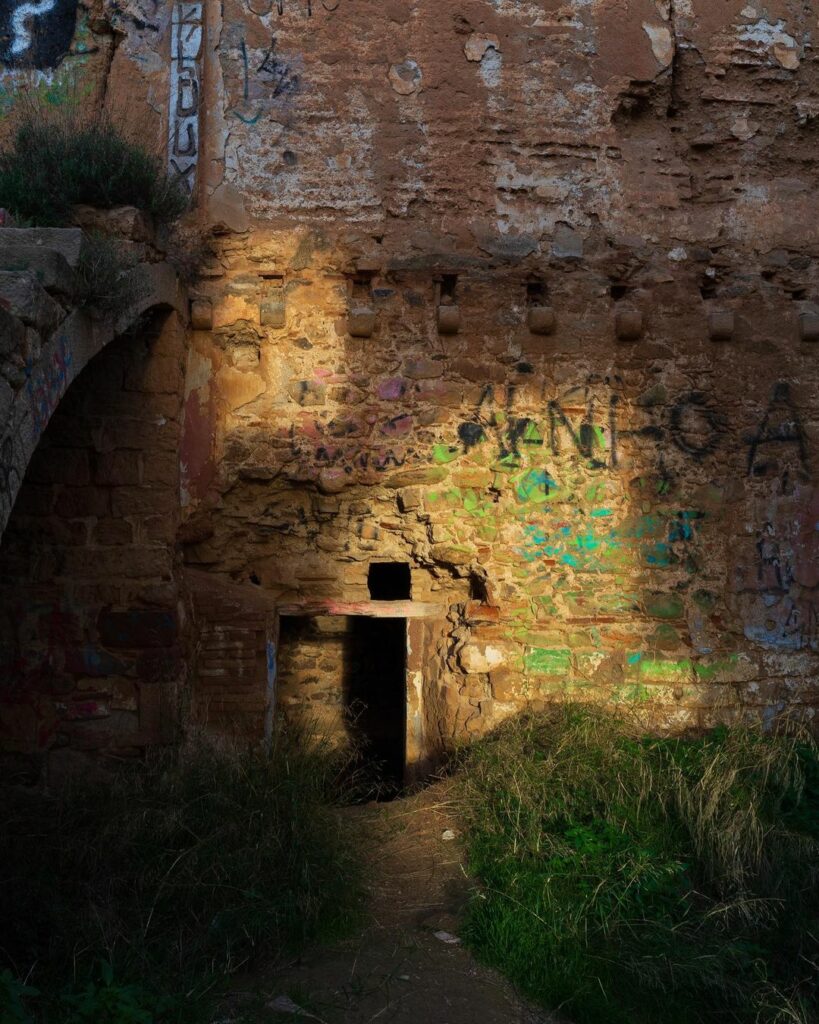
The 10th-century Torre Salvana Castle, located in Santa Coloma de Cervelló, is a Romanesque-style fortress situated near the historical complex of Colonia Güell. The castle, currently in ruins, is known as the Castle of Hell due to its association with numerous paranormal legends.
Visitors to the site have reported various mysterious experiences, such as unexplained sounds, being grabbed by an unseen force, and witnessing strange apparitions, including a pale girl with a gunshot wound on her forehead.
Read also: The Best Castles in Spain to See in 2024
The fortress has become a popular site for mystery enthusiasts in the city, along with the Hospital del Tórax de Terrassa. In any case, this emblematic location is a must-visit for residents of Barcelona.
What people say on Reddit
We spent a weekend camping in an abandoned castle south of Zaragoza. Unbeknownst to me, my buddies stashed a 12 pack in my backpack. I complained about it being heavy the whole way. They told me I was a pussy. When we got to the castle, I said a cold beer would be great. One of the guys said, “They’re not cold, but reach in you pack and get us all one.”
Mehnard
Makes me always wanna know the stories of the people who lived there. What were they like? What did they love? Or their biggest fear? Places like this always make me want to have a little time travel window to see what went on in their daily lives and how the castle and its people changed over the years.
BigCuddleBear
You say abandoned, which leaves me curious about local laws pertaining to squatting. I know some governments allow for such things which I’m against btw. But honestly I’m just curious about what’s stopping someone from straight up moving into one of these so called abandoned castles & just taking up residence, fixing the place up into something more livable in & even turning on utilities to it after likely electrical wiring needs maybe. Bc in just gonna say it, it would be BAD ASS to live in a friggin castle!! One with a moat even more.
itslog1776
The Alcazar of Segovia looks very defensible. And the town next to it with the cathedral you can see in the background is awesome. But there’s a big field across a narrow canyon where I would set up some trebs and go to town.
iyeti
The Map of Abandoned Spanish Castles & Sites
The Ghost Ship of Fuerteventura, Canary Islands

The “SS America”, a colossal cruise ship designed to rival the Titanic, spent over a decade in the waters of Garcey Beach on Fuerteventura’s southwest coast.
The American Star, as it later became known, resembled a ghost ship and attracted attention from locals and tourists. In 1994, while being towed to Bangkok to become a luxury floating hotel, the ship was wrecked in a storm off the Canary Islands.
The shipwreck turned into a tourist attraction, although little remains visible today due to hull corrosion. Commissioned by then-US First Lady Eleanor Roosevelt in 1939, the ship was initially intended to serve as a battleship in World War II if needed.
Belchite, Zaragoza


The ruins of Belchite are part of Spain’s historical heritage. During the Civil War in August 1937, around 5,000 people were killed here within two weeks. Though the site is not open to visitors without a guide, over 10,000 people still sneak in there very year.
In 1964, the last inhabitants of the destroyed Belchite abandoned the ruins and relocated to Belchite Nuevo.
Since then, the ruins have served as the backdrop for numerous films and documentaries. A popular song states, “In the old town of Belchite, the ‘zagales’ will no longer haunt you, and the ‘jotas’ our fathers sang will no longer be heard.” Belchite is located 50 km from Zaragoza.
Ekai’s Old Sawmill


This site once processed timber that would later be loaded onto the Irati train, serving as a dynamic center for Navarre’s industrial economy in the 20th century.
The sawmill closed in 1990, and today, the Government of Navarre is developing an operational plan to promote tourism in the Aoiz-Lumbier area. This plan includes a network of museums, cultural spaces, an interpretation center for the area’s industrial archaeology, and the restoration of the sawmill district.
The Weapons Factory, Navarra
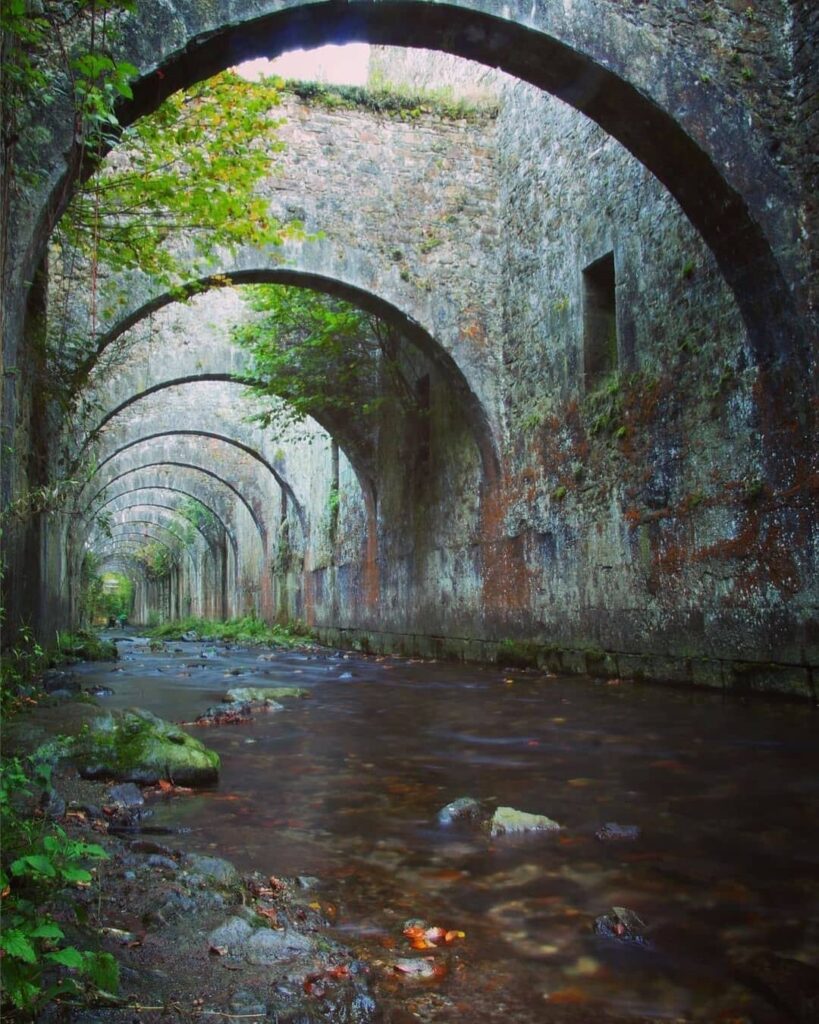
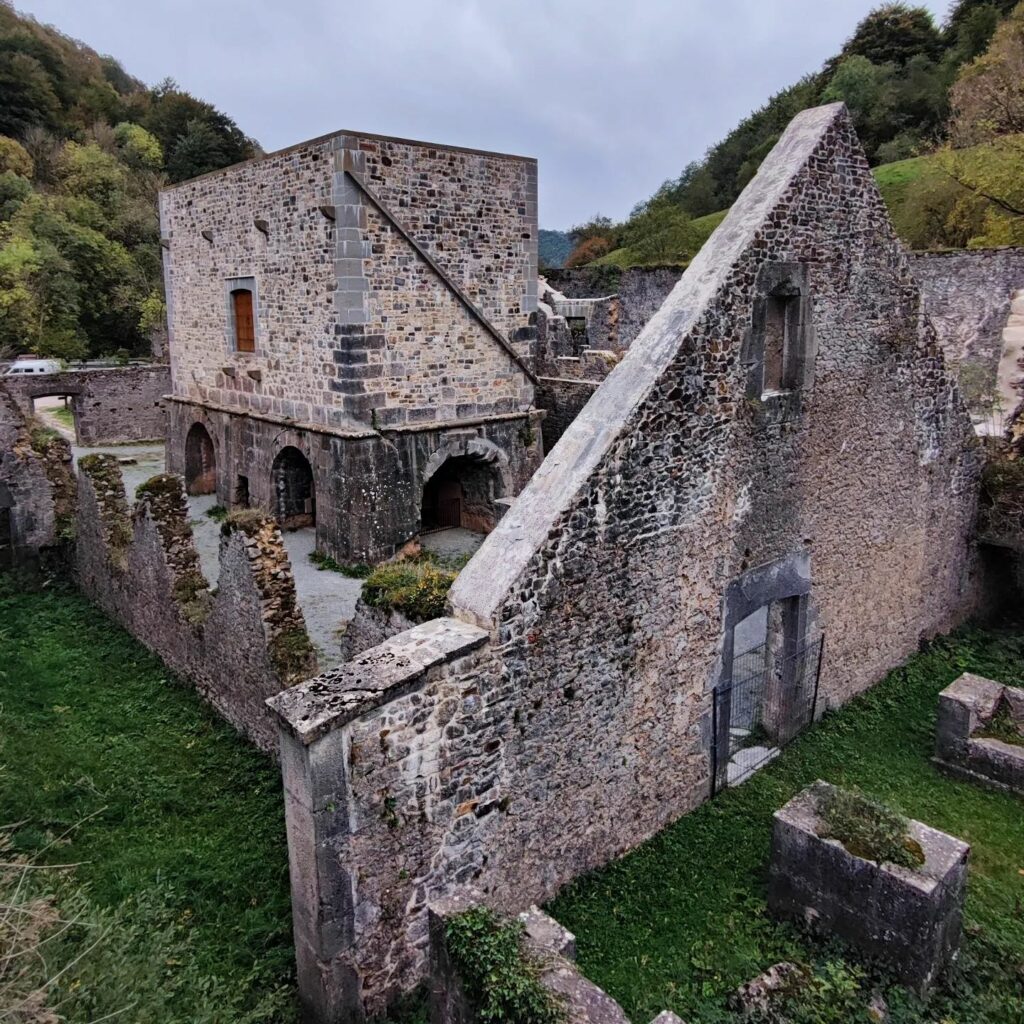
The Orbaizeta Arms Factory, active from 1874 to 1884, was located near the French border and the resource-rich Irati Forest. With a history of ironworks in the area dating back to the 15th century, the factory produced cannons, ammunition, and high-quality iron. It supported over 150 families living in the region.
Designated an Asset of Cultural Interest in 2007, the factory underwent restoration in 2020 by the Historical Heritage Service of the General Directorate of Culture – Institución Príncipe de Viana.
Fort of San Cristóbal: the largest prison escape in Spain

On May 22, 1938, 795 republican prisoners escaped from the Fort of San Cristobal in Navarre, marking the largest prison escape in Spanish history. 221 prisoners were killed during the attempt.
The fort, officially named Fort of Alfonso XII, was built in the 19th century as a strategic defense for Pamplona following the last Carlist War. Its use as a prison ended in 1945. The site is located on Ezkaba mountain, Artica.
Palace of Canto de Pico, Franco’s residence, Madrid

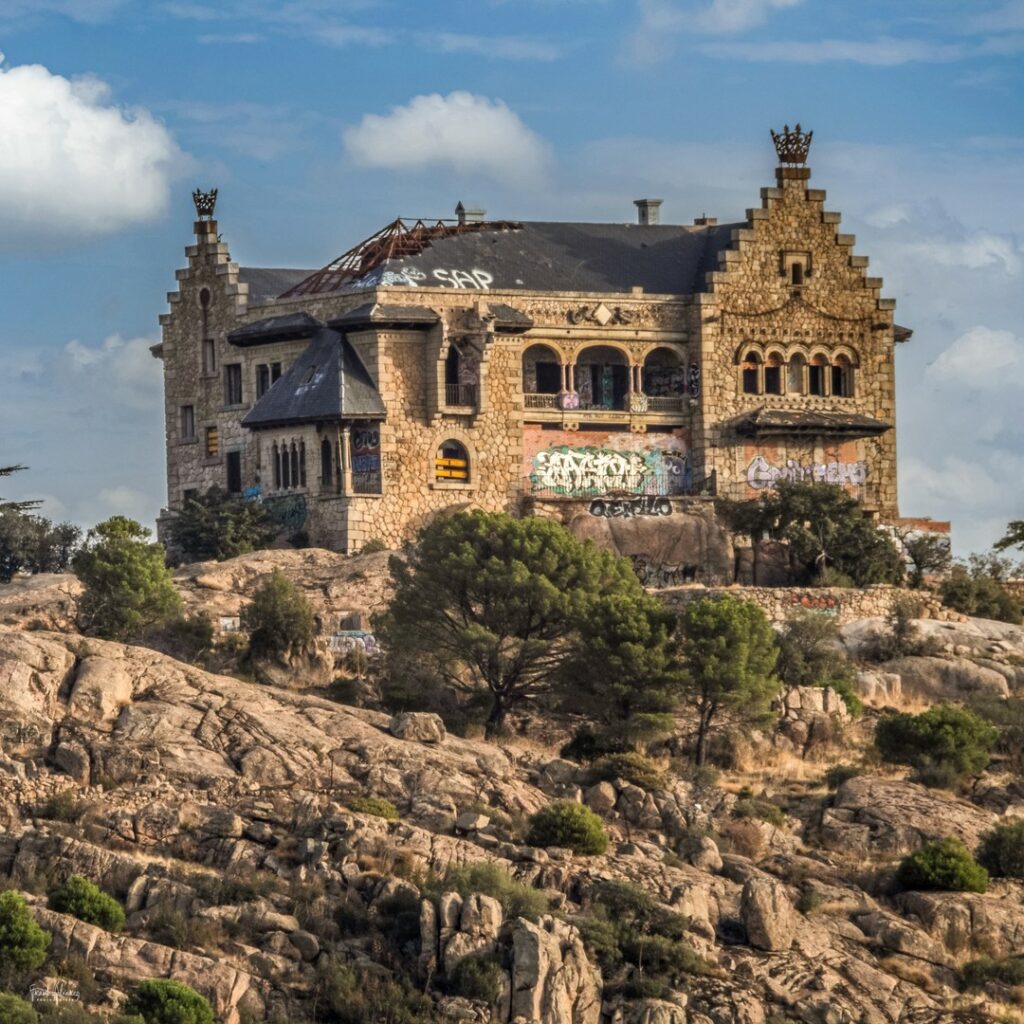
El Canto del Pico, a once-glamorous residence in Torrelodones, has a dark history. During the Civil War, the property changed different owner until it was given to Franco, who used it as a personal refuge. The property’s valuable artistic collection was lost due to neglect and fires.
Initially designated as a Historic Artistic Monument, it was downgraded to an Asset of Cultural Interest by the Community of Madrid.
Caracena Castle, Soria

The Castillo de Caracena is a medieval fortress located in the Spanish town of Caracena in the province of Soria. The original building is of Arab origin, likely built between the 10th and 11th centuries as part of a campaign to strengthen the Umayyad defenses. A 1136 ruling by Cardinal Guido of Bologna, concerning a dispute between the dioceses of Osma and Sigüenza over the lands of Caracena, mentions the existence of a castle in the town. This early castle was active in the 15th century during conflicts between the Catholic Monarchs and the town’s lord, Juan de Tovar.
The structure, described by Hispania Nostra, features masonry remains of the original wall that runs along the high ground between ravines and serves as a base for the later 15th-century keep and north wall of the inner enclosure.
The castle has a double enclosure with an artificial moat and a well-protected zigzag access. The inner enclosure is rectangular, with the keep at the southeast corner, and the outer enclosure follows the interior’s contour with ten hollow cubes featuring artillery attachments. Remains of vaulted rooms, cisterns, and overhanging guard posts are still visible.
The abandoned island of Chiclana, Cádiz


Sancti Petri is an islet located in the province of Cádiz. It is said that it once housed the most famous temple in the West: the Temple of Hercules, dedicated to the god Melkart. It was a prosperous place sustained by the almadraba, but in the 1970s, ruin came and families left the island. It became rubble, moss, and saltpeter.
Today, guided tours are organized to the castle (declared a Cultural Interest site), musical sunsets, and historical recreations. To get there, you can rent a boat or kayak from the Port of Sancti Petri.
Castle of Anguix, Guadalajara


The Castle of Anguix in Guadalajara is a small castle, primarily characterized by its tower. These types of castle are called “torrejón” in Spanish.
Built in 1136 of ashlar limestone, it features a raised entrance accessed by a ladder that could be removed during an attack. The surrounding pentagonal wall dates back to the 15th century, and the original structure was rectangular.
The castle changed ownership several times and was damaged during a conflict supporting Juana la Beltraneja. It was later restored by Count Tendilla but fell into disuse and eventually ruin over the centuries.
The forgotten Versailles-inspired palace, Albacete


The abandoned Gosálvez family palace is located in Villalgordo del Júcar, Albacete. The Gosálvez family reached their peak in 1902 when they commissioned the construction of this grand French-influenced palace, boasting nearly 370 windows.
The Gosálvez family declined around 1960, and the palace now serves as a metaphor for the fall of a family. The wife of Tsar Nicholas II of Russia gifted the central fountain to the family, but today only the base and memories remain, earning it the nickname “the Tsarina.”
In 2006, the Núñez Ruiz family saw potential in the site and purchased the palace and surrounding land to build a hotel. The palace remains eerie, except during occasional photoshoots with models. It is now permanently closed.
The Cesuras Sanatorium, A Coruña


Intended as a refuge for tuberculosis patients, the sanatorium was never actually used. It was initially designed in 1920 in Oza-Cesuras, A Coruña, and surrounded by a pine and eucalyptus forest known as the Sanatorium Park. However, only a third of the structure, designed by architect Rafael González Villar, was ever completed before construction halted in 1931.
There have been proposals to repurpose the sanatorium as a hotel school, but the idea remains in the conceptual stage, without any tangible progress.
Today, little remains of the once lush pine and eucalyptus forest. The building still stands, but it appears more desolate than ever.
Alconétar Castle, Cáceres
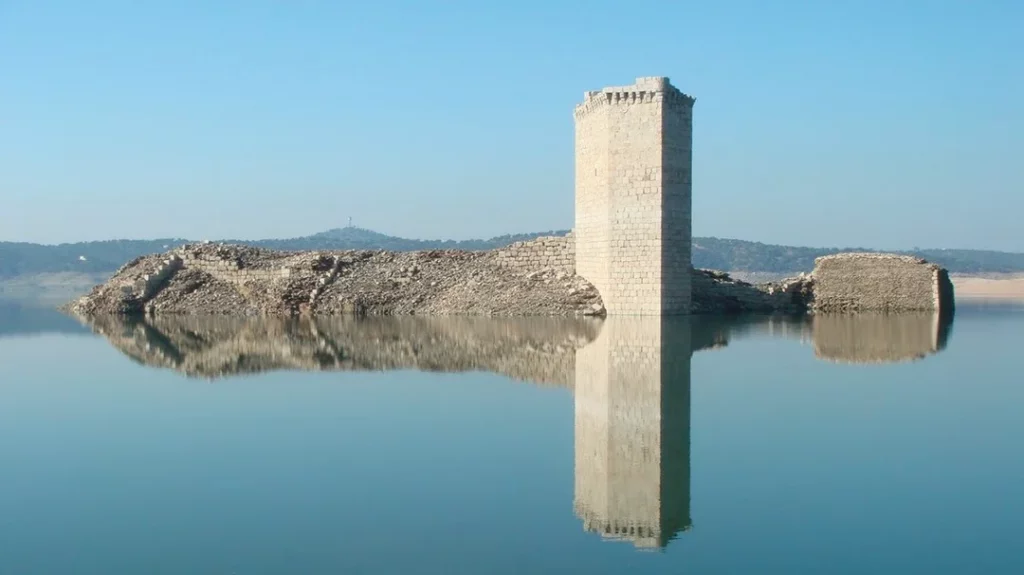
The Alconétar Castle, also known as Floripes Castle, Rocafrida Castle, or Alconétar Fortress, is a fortress situated in Garrovillas de Alconétar in the province of Cáceres.
Of Arab origin, the castle was conquered by Fernando II of León, who ceded it to the Order of the Temple in 1166. In 1203, his successor Alfonso IX reclaimed most of the fortresses and granted them to the Order of Alcántara. However, the Alconétar fortress remained in the hands of the Templars until the Order was dissolved in 1312.
Currently, the castle lies within the perimeter of the Alcántara reservoir. As a result, it remains submerged for most of the time, except during very dry seasons.
Typically, only its keep is visible when the water level drops, but in particularly dry years, the crenellated fence can also be seen.
Cortijo del Fraile, Almería
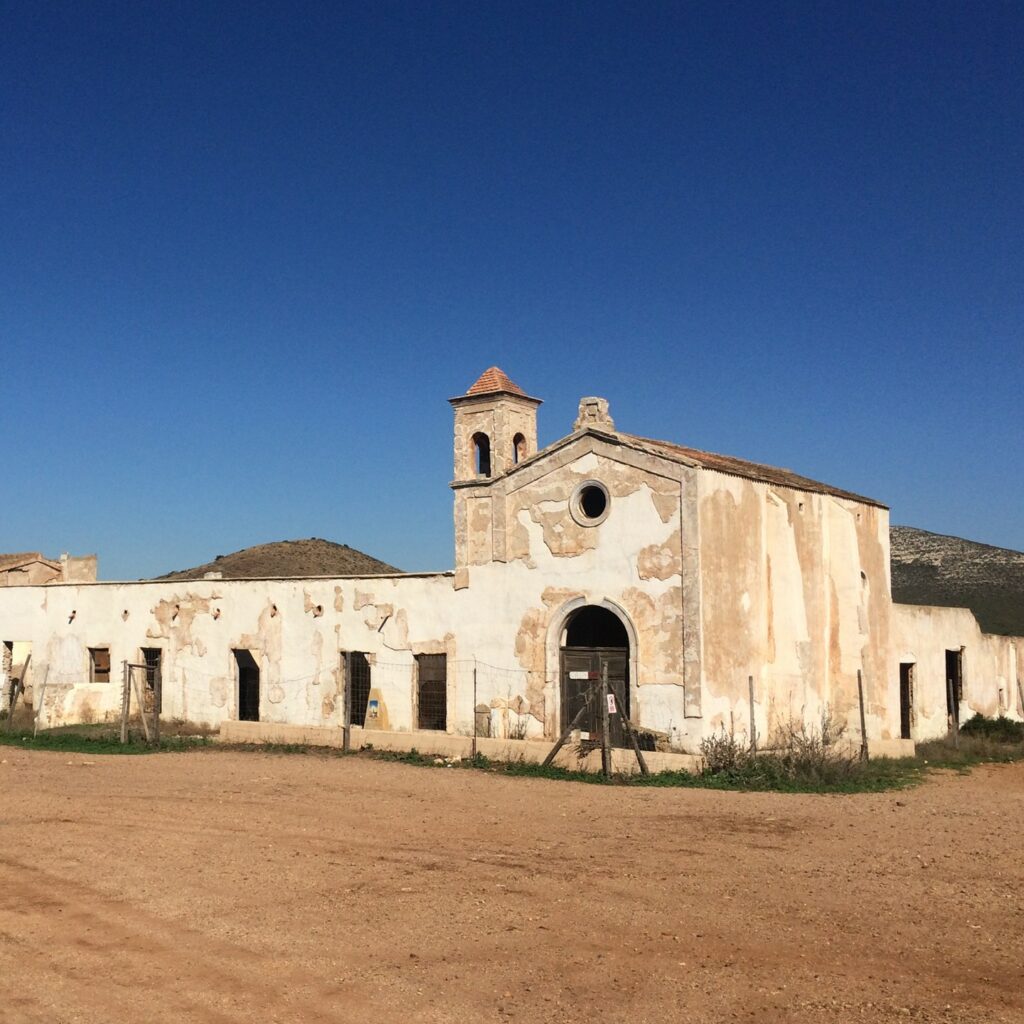

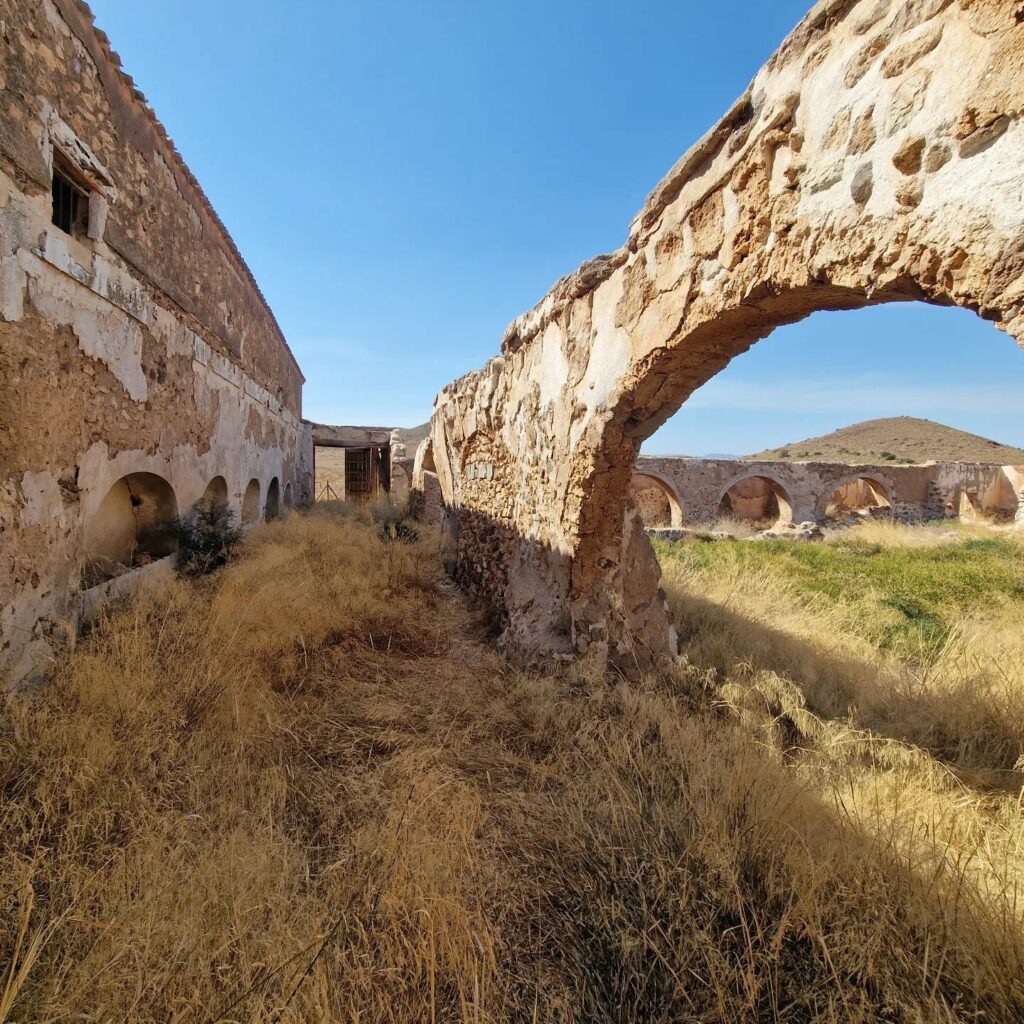
Cortijo del Fraile, an abandoned and ruined farmhouse in Níjar (Almería), was the setting for the tragic events that inspired Federico García Lorca’s Blood Wedding. In 1928, the bride, Francisca Cañadas, ran away with her cousin Francisco Montes, leading to a fatal altercation involving her brother-in-law, José Pérez.
The site was also featured in Carmen de Burgos’ novel and served as a backdrop for several movies.
The farmhouse is now on the Red Heritage List due to its deteriorating state, with only the chapel, part of the perimeter facade, and the walls of the outbuildings remaining.
Davalillo Castle, La Rioja

Davalillo Castle, located in La Rioja, consists of a walled outer enclosure and a keep with a polygonal ground plan. Likely built during Alfonso VIII’s reign, the castle was constructed to bolster the area’s defense against Navarre.
The castle can be accessed from the road leading to the Hermitage of Nuestra Señora de Davalillo, about 3 miles away. It sits atop a hill north of the village, overlooking the Ebro River.
Davalillo Castle is known for its remarkable construction and spatial complexity, which contribute to its defensive effectiveness. The pilgrimage of the Virgin of Davalillo is a traditional celebration during which participants also climb the castle, with the entire village taking part.
Atalaya Castle, Alicante

Located on a strategic mount, Atalaya Castle served as a watchtower since the late Middle Ages. In 1561, it alerted the Marquis of Vélez to the landing of 1,800 Ottoman soldiers, who were later defeated. During the War of Succession in 1706, the English built the castle of La Atalaya and the castle of San Julián to secure their position in the Kingdom of Murcia.
The castle, 242 meters above sea level, is built in the eclectic neoclassicism style of the Frenchified Spanish School. Its isosceles trapezoid plan features five bastions at each vertex plus another in the south, surrounded by a moat with a counter-scarp and fencing.
The entrance is in the southern central bastion, and inside, there are vaulted rooms for the garrison, battlements for artillery protection, and a cistern. A spiral staircase also leads to the roof.
Today, you can take guided tours there and enjoy the views over Villena town and surrounding hills.
La Engaña Tunnel, Cantabria

Located in the Cantabrian village of Vega de Pas, the La Engaña Tunnel (The Tunnel of Lie) stretches approximately 5 miles and was designed to accommodate a double-track railway, though it was never used.
Construction began in the 1940s and took over 20 years, utilizing more than 300 Republican prisoners as slave labor. Franco’s intention was to link Vega de Pas (Cantabria) with Pedrosa de Valdeporres (Burgos) as part of a railway line connecting Santander with the Mediterranean.
Despite the extensive work, the tunnel ultimately remained unused.
Nowadays you can walk or drive through it.
Monastery of Santa María de Rioseco, Burgos
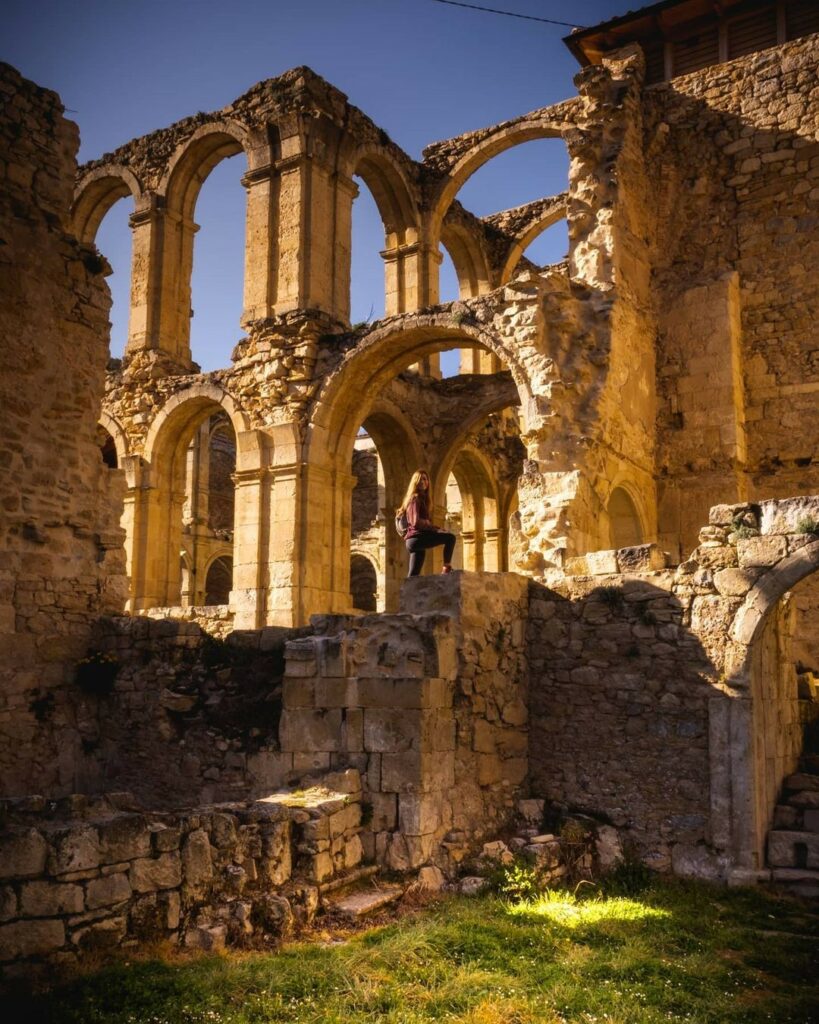

The Monastery of Santa María de Rioseco, located in the Burgos municipality of Valle de Manzanedo, was constructed in 1236. For 600 years, it served as a significant religious, social, and economic landmark in the region of Las Merindades.
However, after its abandonment in the 19th century due to the disentailment of Mendizábal, the monastery fell into disrepair.
Recently, the dedicated efforts of the Salvemos Rioseco group, consisting of individuals, entities, and associations from the region, have rescued the site from neglect.
The monastery is now open to the public for free visits, and the association offers guided tours, too.
Granadilla, Cáceres



The abrupt abandonment of the town of Granadilla was triggered by the construction of the Gabriel y Galán reservoir in the 1950s. Although the village itself was not flooded, its surrounding lands, crops, and mills were submerged, resulting in the town’s isolation.
Today, you can explore this timeless village and admire its well-preserved wall and traditional architecture.
Colony of Santa Eulalia, Alicante




Situated between the municipalities of Sax and Villena, the Santa Eulalia Colony was built in the late nineteenth century as a result of the 1868 colonies law and within the context of utopian socialism
This town had a wide range of amenities, including a theater, post office, gardens, warehouses, school, railroad station, casino, and the palace of the counts.
In 2019, activist Jose Prival made the dilapidated and abandoned Teatro Cervantes in the Colonia de Santa Eulalia de Sax his home in an effort to protect it and collect aid for its restoration. However, a month later, the Sax town hall ordered his eviction.
Despite its abandonment, in 2016, it was declared an Asset of Cultural Interest.
Abandoned Castles FAQ
There are several reasons why many castles in Spain are abandoned, including historical events, shifting borders, economic factors, technological advancements, rural depopulation, and disentailment.
Yes, there are abandoned castles for sale in Spain from time to time. The real estate market for historical properties, including castles, can be quite niche. Interested buyers should consult specialized real estate agencies or websites that focus on the sale of historic properties in Spain. As of writing this post, you can buy a beautiful castle in Segovia, for “only” €15,000,000 😄
